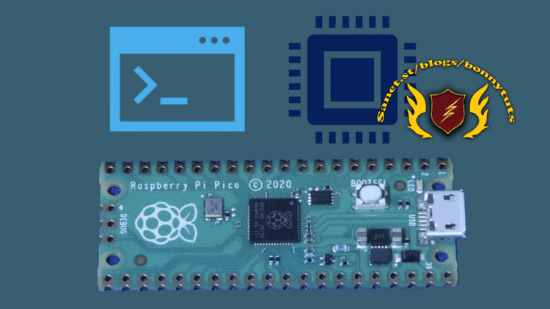
Published 07/2022
MP4 | Video: h264, 1280×720 | Audio: AAC, 44.1 KHz, 2 Ch
Genre: eLearning | Language: English + srt | Duration: 53 lectures (2h 58m) | Size: 1.74 GB
LEDs, Switches, Rotary Encoders, WS2812B LED Ring and HC-SR501 PIR Module
What you’ll learn
To build C++ projects for the Raspberry PI Pico
Connect and code to drive LEDs
Connect and code to drive WS2812B LEDs and a ring of 12 LEDs
Connect and code to read Switches
Connect and code to read Rotary Encoders
Connect and code to read the HC-SR501 PIR Module
Requirements
Beginner level knowledge with electronics (LEDs, Switches, etc)
Basic C++ knowledge (course will not teach syntax)
Compile C++ code for the Raspberry PI Pico
Copy binary code onto the Raspberry PI Pico
Description
The Raspberry PI Pico is a cheap microcontroller board ideal for embedded projects be they commercial or hobby. Its sister board to the Pico W now adding WIFI, allowing IoT projects to be built.
In this course, you will learn about building projects for the Pico or Pico W in C++. We learn about common components, how to connect them to the Pico and build programs to effectively use them. The course covers
·LED and RGB LEDs
·WS2812B LEDs and a 12 LED Ring
·Switches
·Rotary Encoders
·HC-SR501 PIR Module
Bringing all of these components together into a project that can animate patterns on the LED Ring. You can select the pattern, colour and speed of the animation using the Rotary Encoder.
The course looks at hardware electronics and software separately. People are often more comfortable with one of these than the other. Separating them allows you to skim through the bits you are comfortable with and take your time where you are not.
The course is suitable for those with very little electronics knowledge. Basic C++ knowledge is assumed as the course will not teach syntax, though will explain what the code is doing.
The course follows the knowledge my students would have gained in the Introduction to C Development Environment for Raspberry PICO course on Udemy. I will assume that you have a development environment setup and can compile C or C++ code for the Pico and copy the binary over onto the Pico to run. If you don’t feel confident with that, please do take my introductory course as that will set you up for this one.
The course includes all the code examples and my answers to the assignment problems. I also provide recommendations for further reading on each of the topics. So everything you need to start developing for the Pico and keep going.
Who this course is for
Those wanting to build embedded projects using Raspberry PI Pico
Password/解压密码www.tbtos.com
https://rg.to/file/855e0dd8aecf14b839d94efcca830f24/Raspberry_PI_PICO_Micro_Projects_(C__).part1.rar.html
https://rg.to/file/c1fc99dd0cabc76bcdcbebece0e5587c/Raspberry_PI_PICO_Micro_Projects_(C__).part2.rar.html
https://rg.to/file/7dcab7af77683cf10261ee072939fb80/Raspberry_PI_PICO_Micro_Projects_(C__).part3.rar.html